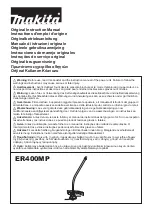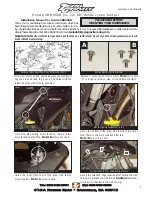
//
RF 96 SDS SW868/SW915/SW917/SW922-NET
Montage- und Anschlussanleitung / Funk-Lasersensor
Mounting and wiring instructions / Wireless laser sensor
Instructions de montage et de câblage / Capteur laser sans fil
Istruzioni di montaggio e collegamento / Sensore laser wireless
Instruções de montagem e instalação / Sensor laser sem fio
Инструкция по монтажу и подключению / Лазерный радио-датчик
st
eut
e T
echnol
ogies GmbH & Co. K
G
Brück
ens
tr
aße 91, 32584 Löhne, Germany
, www
.s
teut
e.c
om
3 / 20
English
tery-driven system and thus to increase battery life, distance calcula-
tions are clocked. The standard values of 5 seconds cycle time and the
resulting 2.5 seconds debounce time represent a good compromise
between response time and battery life.
Battery
The battery voltage is displayed on the Sensor Bridge Interface under
»Sensors & Actors« in percent. In addition, the battery voltage is dis-
played in the logs in mV.
When the battery voltage acc. to the radio protocol drops below approx.
<3200 mV (at 20°C, load approx. 20 mA), it may be assumed that the
battery is empty.
Attention: The open circuit voltage measurement
does not provide reliable information!
In order to ensure reliable
functioning, the battery must be replaced. To do this, the 5 screws in
the housing cover must be opened using a torx-8 screwdriver. The
battery should be inserted in the direction shown by the symbols on
the cover. Use only the designated battery type or a complementary
battery type. Depending on the country the device is supplied to, deliv-
ery will include an AA lithium battery SL-760/3.6 V/2.2 Ah in a battery
adapter, or a lithium battery SL-2770/3.6 V/8.5 Ah without an adapter
or a complementary battery type. Once the battery has been changed,
the housing must be closed and the screws replaced, tightened with a
torque of approx. 0.45 Nm. The sealing must not be contaminated by
any foreign bodies.
Spare part:
Name
Material No.
Lithium battery SL-2770/S 3.6 V/8.5 Ah
1202806
Lithium battery SL-760 (3.6 V/2.2 Ah AA)
1351045
Disposal
- Observe national, local and legal regulations concerning disposal.
- Recycle each material separately. Dispose of possibly contained
batteries correctly.
N.B.
Subject to technical modifications. Reconstruction and alterations to
the device are not allowed. The described products were developed in
order to assume safety functions as part of an entire plant or machine.
It is the responsibility of the manufacturer of a plant or machine to
guarantee the correct general function. steute does not assume any
liability for recommendations made or implied by this description. New
claims for guarantee, warranty or liability cannot be hereby derived
beyond the general terms and conditions of delivery.
ESD
Ensure adequate ESD protection for all work that requires opening
the unit.
Penetration of radio signals:
Material
Penetration
wood, gypsum, glas uncoated
90…100 %
brick stone, press boards
65…95 %
armoured concrete
10…90 %
metal, aluminium lamination, water
0…10 %
Typical ranges:
Place of use
Wireless range (approx.)
in free field (SW868/915/917)
450 m
in free field (SW922)
150 m
indoors (SW868/915/917)
40 m
indoors (SW922)
20 m
Radio operation
The transmission of a switching command from the transmitter to the
receiver takes about 80 to 100 ms, based on the sWave® data trans-
mission. The switching signal from a transmitter may not be generat-
ed at a shorter interval, otherwise the signal will be suppressed. The
preconfigured cycle time of 5 s can be re-set using the Sensor Bridge
to between min. 1 s and max. 31 s. Debounce time always equates to
half the configured cycle time.
Safety
Do not use the device in connection with other devices whose direct or
indirect purpose is to ensure life or health, or whose operation may
pose a threat to humans, animals or material assets.
Maintenance and cleaning
.steute recommends routine maintenance as follows:
1. Remove all dirt particles: Clean enclosure on the outside only.
Clean device in accordance with IP protection class. Clean with
a soft cloth and water or a mild detergent. Do not clean using
compressed air.
2. Test the function.
Technical information
The distance is determined by measuring a light impulse. The time
required for the light impulse to travel to an object and back is used
to calculate the distance based on the speed of light. This measuring
principle means that the switching point is largely independent of the
colour and material of the object. The quantity of reflected light has
no influence on the switching distance, provided that sufficient light is
reflected for the measuring process. This is the case for conventional
materials. With some porous and very low-reflecting materials, it is
possible that the full extent of the switching distance cannot be used.
Very strongly reflecting or mirroring materials can lead to deviations
in the switching distance. In order to save energy when using a bat-




































